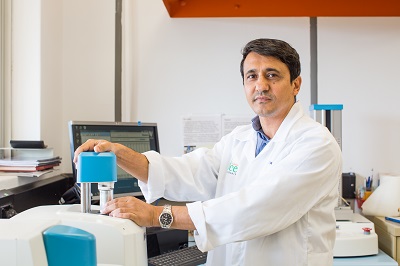Cutting-edge research which underpins the future of rice production featured at the 2020 Rice Industry Field Day held at the NSW Department of Primary Industries (DPI) Yanco Agricultural Institute on Thursday March 5.
Hosted by NSW DPI, the field day is a collaboration between the department, Ricegrowers' Association of Australia, SunRice, AgriFutures and Rice Extension.
NSW DPI Southern Cropping director, Deb Slinger, said participants were able to see how new rice varieties are evaluated to ensure they meet consumer demand.
“Our Quality Evaluation Program (QEP) processes about 7000 samples every year in the quest to deliver varieties which match consumer and market demand,” Ms Slinger said.
“Rice is unique. Unlike most other cereal grains, it is generally consumed as an intact, whole grain.
“Consumers expect each grain to be translucent and uniform in shape and size. Using image analysis techniques, DPI researchers measure the size and shape of the grains.
“Rice breeders use this information to help determine which lines meet the specifications for potential new varieties.
“Rice has to also pass the palate test and the QEP wet chemistry phase assesses approximately 3000 lines for compositional, cooking and textural qualities.”
 NSW DPI cereal chemist, Prakash Oli, said participants were able to see how researchers run laboratory tests to analyse cooking and textural qualities.
NSW DPI cereal chemist, Prakash Oli, said participants were able to see how researchers run laboratory tests to analyse cooking and textural qualities.
“The amount of amylose, one of the two components of starch, is measured to help determine rice quality. The higher the amylose content, the firmer the cooked rice,” Dr Oli said.
“Australian commercial rice varieties fall into the intermediate amylose range, except Doongara, which has a high amylose content and a low glycaemic index. These qualities mean Doongara meets the needs of consumers seeking the potential health benefits of low GI food, including reducing blood sugar levels, aiding weight loss and lowering risks of heart disease and type 2 diabetes.”
QEP measure protein using near infrared (NIR), as protein is another significant factor affecting rice cooking properties. Rice growers understand the positive correlation between nitrogen fertiliser use and protein levels in rice grains, depending on the rice variety. Low protein for instance, is preferred in the premium quality sushi rice.
The 2020 field day will featured tours of the NSW DPI rice breeding and research programs, an overview updating the AgriFutures Rice Program, the latest marketing insights from SunRice and Rice Extension presentations.
IMAGE: NSW Department of Primary Industries cereal chemist, Dr Prakash Oli, runs rice quality tests at the Yanco Agricultural Institute.